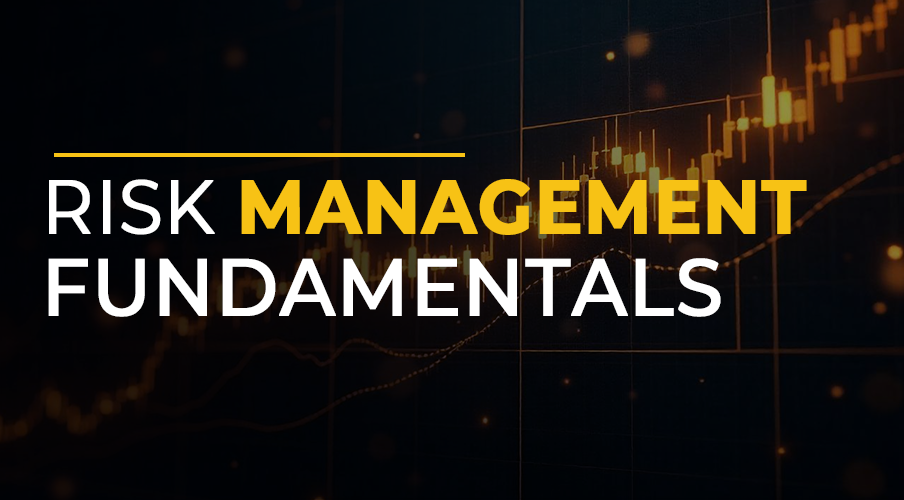FXCareers Blogs
 Go Back Home
Go Back Home

 24-07-2025
24-07-2025 5 minutes of Reading
5 minutes of Reading
Risk Management Fundamentals
1. What Is Risk Management?
Risk management is the process of identifying, analyzing, and controlling the uncertainties in trading to protect your capital and ensure long‑term survival. Without it, even a profitable strategy can blow up your account when unexpected events occur—like the sharp intraday swings seen in EUR/USD during the June 2025 US Non‑Farm Payroll release.
2. Core Concepts & Definitions
Position Sizing
- What it means: Determining how large a trade you take based on the dollar amount you’re willing to risk.
- Why it matters: Keeps you from risking too much on any one trade and supports effective position sizing strategies—a concept emphasized in every solid trading education program.
- Quick formula:
Position Size = (Account Equity × Risk %) / Trade Risk in Points (or pips)
- Example: With $10,000 equity, risking 1% ($100) on a trade with a 50-pip stop-loss ⇒ $100/50 pips = $2 per pip ⇒ 0.02 lots in forex terms.
Stop-Loss Order
- What it means: An order placed to automatically close a losing trade at a predefined price.
- Why it matters: Limits your maximum loss even if you’re away from your screen. Stop loss and take profit rules help traders avoid emotional decisions and protect capital.
- Tip: Always set a stop-loss before you enter a trade. Never trade without one.
Risk-Reward Ratio (R:R)
- What it means: The ratio of potential profit (reward) to potential loss (risk).
- Why it matters: Ensures that your winners are big enough to cover your losers. Understanding the risk reward ratio in forex helps you evaluate trade setups more objectively.
- Common benchmark: Aim for at least 1:2 (risk $1 to make $2).
- Example: If your stop-loss is $50 away and your take-profit is $100 away ⇒ R:R = 1:2.
Drawdown
- What it means: A decline from a peak in your account equity, measured in percentage.
- Why it matters: Large drawdowns (e.g., 30%) require much bigger gains to recover (a 30% loss needs 43% gain).
- Quick fix: Keep max drawdown per trade low (1–2%) and total drawdown (across several trades) under 10–15%.
Diversification
- What it means: Spreading risk across different instruments or strategies.
- Why it matters: Reduces the impact of any single adverse event, which is essential when learning how to manage trading risk effectively.
- Example: Instead of only trading EUR/USD, you might also trade gold and S&P 500 futures—uncorrelated or less-correlated markets help smooth returns.
Why forex is popular in UAE is due in part to the availability of diverse instruments and tax-free trading conditions—making diversification even more appealing to UAE-based traders.
3. Step-by-Step Risk Management Plan
Define Your Risk Per Trade
- Choose a fixed percentage of equity (commonly 1–2%).
- Example: With $5,000 account and 1% risk ⇒ $50 max loss per trade. This is a core principle in forex risk management best practices and is covered in professional trading education programs.
Calculate Position Size
- Use the formula above.
- Tools: Many charting platforms and brokers have built-in position size calculators, making it easier to apply effective position sizing strategies—something you'll frequently practice when you learn forex in Dubai from expert mentors.
Set Stop-Loss & Take-Profit
- Base them on technical levels (support/resistance, ATR-based multiples) rather than arbitrary pip counts.
- Ensure R:R ≥ 1:2 whenever possible. Following proper stop loss and take profit rules helps align technical logic with risk control.
Monitor Drawdown
- Track account equity peaks and troughs.
- If drawdown exceeds your personal threshold (e.g., 10%), pause trading and review your plan. Monitoring drawdowns is a vital part of how to manage trading risk systematically.
Diversify
- Limit exposure to any one asset or correlated group.
- Allocate capital across 2–4 instruments or strategies to strengthen your overall forex risk management best practices.
4. Real‑World Example: June 2025 Volatility
During the June 6, 2025 Non-Farm Payroll release, USD pairs moved 100+ pips within minutes—many traders without strict stop-losses saw losses exceed 2–3% of equity in a single trade. Those who pre-calculated position sizes and set stops based on Average True Range (ATR) multiples rode the volatility safely and captured swings without catastrophic loss. This real-world event demonstrates the value of how to manage trading risk under pressure using effective position sizing strategies and sound forex risk management best practices.
5. Self‑Assessment & Exercise
Practice Calculation
- On a demo account, pick three different currency pairs.
- Assume $10,000 equity and 1% risk. Calculate position sizes using the current 14-period ATR to set stops. Practicing this strengthens your understanding of effective position sizing strategies and supports better decision-making—especially important during your trading education journey.
Simulate a Volatile Event
- Back test or replay the June 6 NFP session.
- Note how your stop-loss placement and position sizing would have affected your drawdown. Review your approach to reinforce how to manage trading risk in unpredictable markets.
Diversification Check
- List the instruments you trade.
- Research their correlations (e.g., via free online tools).
- Adjust your plan to include at least one low-correlation asset—another key element in forex risk management best practices.
Get certified with our KHDA-approved Training Course in Currency Market — Learn More


.png)
